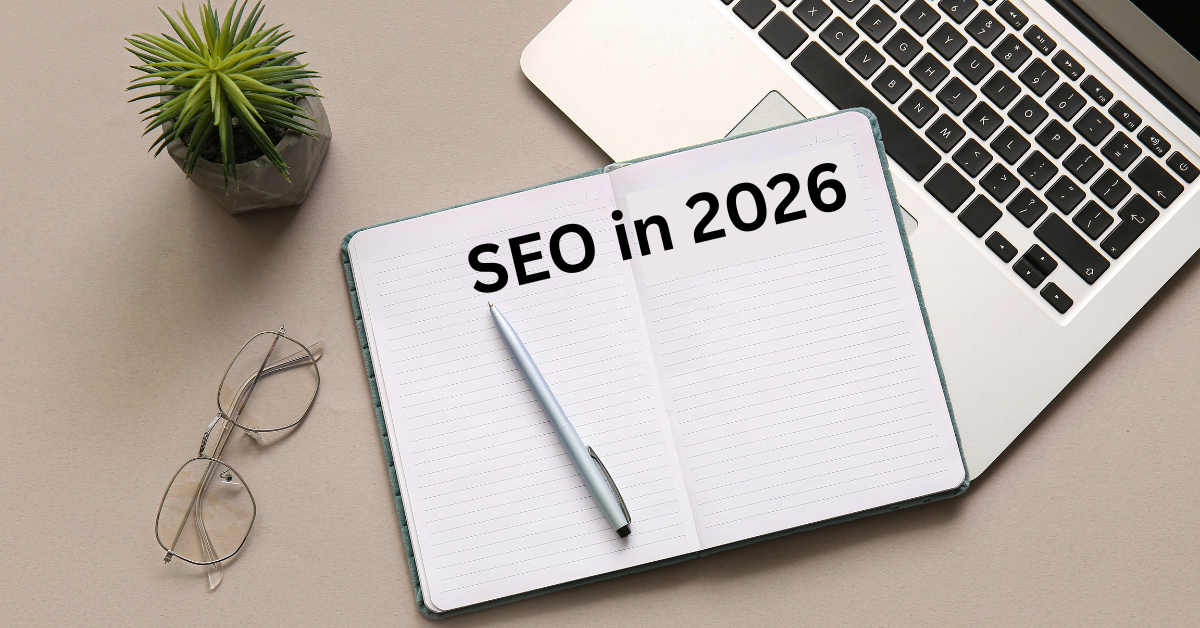Online search has changed more in the last few years than in the previous two decades. For a long time, the goal was simple: get your website on the first page of Google. That was the job of SEO, or Search Engine Optimization. The higher you ranked, the more people saw your site. But search no longer means only Google. AI-powered tools like ChatGPT, Microsoft Copilot, and Perplexity AI have created a new way of looking for information. Instead of showing a long list of links, these tools give a single, ready-made answer. The response might include text, a short list, or even a chart, all presented in one place. For businesses, this means your content is no longer just competing for clicks, it’s competing to be the answer itself. This change has created a new approach called GEO, or Generative Engine Optimization. GEO prepares content for AI-driven searches. It focuses on clear language, direct answers, and structure that machines can easily read. This shift is shaping the future conversation of GEO vs SEO in Digital Strategy.
The question many business owners ask is: does GEO replace SEO, or do they work together? To understand the answer, we first need to look at both.
What is SEO?
SEO, or Search Engine Optimization, is the process of making a website easier to find on traditional search engines such as Google, Bing, or Yahoo. You can think of it like a shop on a busy street. Without a signboard, people will walk by without noticing it. SEO acts as the signboard that points them to your door.
At the heart of SEO are keywords. These are the words people type into the search box. If someone types best running shoes, the websites that use that phrase naturally in their text have a better chance of showing up. Backlinks are another part of SEO. A backlink is a link from another website to yours. When trusted sites link to your page, Google treats that as a signal of quality. The more trustworthy links you collect, the higher your chance of ranking.
There is also the technical side. A site that loads too slowly or doesn’t work well on mobile phones will fall behind. Clear titles, simple page structure, and accurate descriptions all matter. Search engines scan these details to judge whether a page is reliable. Finally, user experience ties it all together. If visitors come to your site and leave right away, search engines assume the content isn’t helpful. But if people stay longer, read more, or buy something, Google treats the site as valuable. SEO has been used for more than twenty years. It remains a powerful way to attract traffic because people still start most of their searches on Google. For example, a bakery that adds the phrase fresh bread near me to its site will appear in local results. That means more people walking into the shop.

What is GEO?
GEO stands for Generative Engine Optimization. It was created for AI-based search tools. Unlike Google, which lists multiple results, AI systems give one short summary. They pull from many sources, combine the data, and present a single response.
Because of this, GEO requires a different style of writing. It’s less about repeating keywords and more about giving natural, direct answers. AI looks for content that feels conversational, structured, and reliable. It isn’t scanning for keyword density alone. It tries to figure out context and intent.
Here’s an example. Imagine someone asks: How do I fix a garage door that won’t open?
- An SEO-style page might focus on the phrase garage door not opening. The phrase would appear in headings, titles, and throughout the text to improve ranking on Google.
- A GEO-style answer would read more naturally: First, check if the batteries in your remote control are working. If the door still doesn’t move, inspect the springs. If nothing changes, call a technician.
The second version sounds more like everyday advice, which makes it more useful for AI engines.
Structure is another key factor. Pages that use clear headings, Q&A sections, or step-by-step guides are easier for AI to process. Adding references to credible sources also increases the chances of being included in AI responses.
Key Differences Between GEO and SEO
Here’s a side-by-side look at how GEO and SEO differ:
| Feature | SEO (Search Engine Optimization) | GEO (Generative Engine Optimization) |
| Target platforms | Google, Bing, Yahoo | ChatGPT, Microsoft Copilot, Perplexity AI |
| Results shown | Many links on a page; users choose what to click | One summary answer, often mixed formats |
| Content focus | Keywords, backlinks, metadata | Natural language, direct answers, context |
| Content format | Mostly text with some images, maps, videos | Tables, step lists, Q&A sections, code snippets |
| Ranking factors | Keyword use, backlinks, technical performance | Content clarity, structure, source credibility |
| Traffic effect | Drives measurable clicks and conversions | Fewer clicks, but brand mentions in summaries |
The table makes the differences clear at a glance, but each point also deserves explanation.
SEO focuses on traditional engines that still show multiple results. GEO works for AI engines that give one combined answer. SEO content is built on keywords and backlinks, while GEO content needs to read like natural speech and respond directly to questions. SEO results are mostly text-based, while GEO answers can appear as lists, tables, or other structured forms.
Ranking also changes between the two. Google rewards keyword placement and technical quality like site speed. GEO rewards clarity, question-and-answer style, and reliable sourcing. Finally, SEO usually brings measurable traffic to a site, while GEO often reduces clicks because the answer is already complete in the AI’s summary. Even so, GEO can place your brand name in front of people, which builds recognition even without a direct visit.
Why GEO Matters Today
Changing Search Habits
The way people look for information has shifted. Instead of clicking through many Google links, a lot of people now use tools that give quick answers. A student might ask ChatGPT for help with homework. A traveler might use Perplexity to plan a trip. Someone at work might check Microsoft Copilot to review a report. If a website is not written in a way these tools can read, it may never reach those people.
The Rise of Zero-Click Searches
On Google, you’ve probably seen short answer boxes at the very top of the page. They give you the answer right away, and many people don’t bother clicking on the links below. AI tools work the same way, except they do it every time. They always show one answer in a simple form. GEO makes it possible for your content to be part of that answer instead of being ignored.
An Unpredictable Search Journey
The path people take when looking for answers isn’t straight anymore. One person might ask ChatGPT, then check Google, then watch a video on YouTube. Another person might stay with only one tool. Because people move in different ways, a business needs both SEO and GEO. Using only one leaves big gaps where customers can slip through.
Preparing for What’s Ahead
SEO is still important, but it does not cover everything. More and more people are turning to these new tools, and they will handle a bigger part of search in the future. Businesses that start adjusting their content now will be easy to find on both Google and newer tools. Businesses that ignore this may slowly disappear from view.
Balance Between SEO and GEO
The smart move is not to choose one over the other. SEO brings clicks from Google. GEO puts your name inside the answers that people read from AI tools. Together, they cover both sides. A business that uses both has a better chance to be seen than one that only focuses on one method.
GEO vs SEO in Digital Strategy: Why Businesses Need Both
Business owners often ask whether GEO will replace SEO or if one is more important. The truth is simple: they work best together. SEO still brings direct traffic. People continue to search on Google, Bing, or Yahoo every day, and rankings there drive real customers. A local shop that appears for “bakery near me” doesn’t just get clicks it gets people walking through the door. That kind of visibility is hard to ignore.
GEO, on the other hand, covers AI-driven platforms such as ChatGPT, Copilot, or Perplexity. These tools don’t show ten links. They give one summarized answer. Even if the user never clicks, a business name inside that summary builds trust. It places the brand in front of people in a new way. Relying only on one channel is risky. Ignoring SEO means losing those who still prefer Google. Ignoring GEO means disappearing from AI summaries, where more people are now looking for answers. GEO vs SEO in Digital Strategy isn’t a competition. It’s two approaches covering different habits, and both are needed to stay visible.

GEO vs SEO in digital strategy: Future Trends
Search habits are always changing. For a long time, Google and Bing were the main places people looked for answers. That is still true, but now more people also use tools that give quick replies without showing long lists of links. In the next few years, both will matter. Some people will keep searching on Google, while others will ask these new tools first.
One trend is the growing value of expertise. Both SEO and GEO work better when the content comes from someone who knows the subject. Google checks if the writer has real experience and trust behind their words. Tools that give AI answers also look for the same things. Articles that show who wrote them, use real sources, and explain steps clearly are more likely to be chosen. Weak or copied content has less chance.
Another trend is the rise of zero-click searches. On Google, this happens when an answer shows at the top of the page, and people read it without clicking further. On AI search engines, this is the normal way they work. They always give one short answer. This means fewer clicks to websites, but it still helps when your brand name appears in those answers. Even without a click, people remember it.
Real-World Cases and Practical Shifts
The way people move through information is less simple than it used to be. Years ago, most people typed into Google and clicked through the list of results. Now someone might start with ChatGPT, check Google for details, and then watch a video on YouTube. Another person might do the same steps but in a different order. Because the path is not the same for everyone, businesses need both SEO and GEO to stay visible. Using only one leaves gaps.
Another shift is the need for clear structure. Search tools like pages that are easy to read. Websites with headings, short answers, and question-and-answer sections stand out. This does not mean long guides are useless. A full article still helps SEO. But inside those long pieces, short clear parts are what AI tools notice and use. For example, adding a FAQ section or a summary box makes your content easier to pick up.
GEO vs SEO in Digital Strategy: Practical Steps for 2025
Knowing both matter is one thing. Putting them into practice is what counts.
Strengthen SEO basics
A site should load quickly, work well on mobile, and be simple to move through. Use clear keywords in headings and titles. Build links from trusted sources and make sure pages can be indexed without errors. These foundations still determine who appears in search results and how visible your business will be online.
Shape content for GEO
AI platforms prefer direct answers. Instead of relying solely on long guides filled with keywords, include short sections that respond clearly to common questions. Write the way people ask, such as “How do I fix a garage door?” and give a simple step-by-step reply. This approach makes your content easier for AI tools to pick up.
Add schema markup
Schema highlights elements like reviews, FAQs, and products. Search engines and AI tools use this structure to identify useful details, which increases the chance of being included in answer boxes or AI summaries.
Balance depth with clarity
Detailed posts demonstrate authority, which helps SEO. Short, focused summaries inside those posts give GEO what it needs. One piece of content can serve both purposes without losing impact.
Track results differently
SEO results appear in clicks, visits, and conversions. GEO impact is less direct but can be seen in brand mentions within AI answers or placement in Google’s AI overview. Even without a click, your brand gains recognition. Both types of visibility matter.
Looking ahead, businesses that treat GEO vs SEO in Digital Strategy as a combined effort will stay ahead. SEO delivers steady traffic, while GEO creates presence in AI-driven spaces. Together, they form a strategy that works for both current search habits and emerging trends.
Preparing Your Digital Strategy
So how can businesses adapt right now? The first step is to review existing content. Which pages already bring traffic through Google? Which ones could be reshaped into Q&A format for GEO? An audit like this highlights both strengths and gaps.
The second step is to add structure. Long articles are still useful, but within them, break information into smaller, direct pieces. Use headings, bullet points, and FAQs so both Google and AI can pick them up. Adding schema markup—special code that highlights key information helps machines understand the page even better.
The third step is to balance depth with clarity. A full guide shows expertise and satisfies SEO. Short, sharp answers satisfy GEO. The combination is what works best. Write the long form, but also include the short answer box inside it.
Finally, track performance. For SEO, use tools like Google Analytics to measure visits, clicks, and conversions. For GEO, look for brand mentions in AI overviews or check how often your content is referenced in AI summaries. Numbers may be harder to pin down, but patterns will still show if your work is being noticed.

Myths About GEO and SEO
People have started saying a lot of things about GEO, and many of them are wrong. Some believe GEO will replace SEO. Others think it only works for big companies. Some even claim SEO is dead. Let’s look at these myths and see the truth.
GEO Will Replace SEO
This is false. GEO is not here to push SEO away. Think of SEO as the base of a house and GEO as an extra floor on top. You still need the base for the whole thing to stand. People still search on Google when they shop, compare products, or read reviews. GEO matters because more people are also asking smart tools for answers, but SEO hasn’t gone away. In fact, good SEO often makes GEO easier because the same pages that rank on Google are also read by these tools.
GEO Is Only for Big Companies
This is another mistake. Small businesses can use GEO too. A plumber can write a short page with answers to common questions, and that page might show up when someone asks for help. A coffee shop can write in plain words about their drinks and appear in AI answers. You don’t need fancy design or a big budget. What matters is that the writing is clear and useful. That means GEO helps small businesses just as much as big ones.
SEO Is Dead
Every few years, someone says SEO is finished. It’s not true. Millions of people type searches into Google every single second. That’s not going to stop. What has changed is how the answers look. Sometimes Google shows a short box at the top. Sometimes AI tools pull the content into their answers. But SEO is still alive. A good way to think about it is like a tree: SEO is the trunk, and GEO is a new branch. The branch depends on the trunk. Without SEO, there would be nothing for GEO to grow from.
What Businesses Should Do in 2025
The real question is practical: what steps should a business take right now?
The first step is to focus on SEO basics. Your website needs to be fast, easy to read, and mobile-friendly. Pages should use clear headings and meta tags. Keywords still matter, but they must appear naturally, not forced. Content should be useful enough that visitors stay rather than bounce away. These foundations are as important now as they were five years ago.
The second step is to add GEO-friendly practices. Write short question-and-answer sections inside your longer articles. Include step lists where it makes sense. Add schema markup so that AI engines can read your content in a structured way. Write in a natural voice that mirrors how people speak. These adjustments help AI engines pick up your content and place it in summaries.
Third, don’t stay on a single platform. People no longer use only Google. They move between Google, ChatGPT, Perplexity, YouTube, and even social platforms. Your content should reach across these points. That may mean having articles for SEO, short Q&A sections for GEO, and videos for YouTube. Covering multiple platforms gives you more chances to be seen.
Finally, show real expertise. Both Google and AI engines look for authority. Add case studies to your site. Share success stories that show you know what you’re doing. Write author bios so readers and machines know who is speaking. Provide context that proves you’ve worked in your field. These details matter more than ever, because both SEO and GEO reward content that comes from a reliable, informed source.
In short, businesses in 2025 need a mixed approach. SEO keeps the traffic flowing from Google. GEO places your brand in AI-driven answers. Together, they give you visibility in both old and new forms of search.
Final Words
SEO and GEO serve the same purpose in different ways: they connect people to information. SEO grew from Google’s rise and still matters because most people use search engines when they want to buy, compare, or learn. GEO appeared because millions now ask AI tools for answers. Instead of a long list of links, these tools give a single summary.
Leaving out GEO makes you invisible in AI results. Ignoring SEO cuts you off from Google. Together, they cover both sides. SEO brings clicks you can measure. GEO places your content inside AI answers that people read every day. A smart digital strategy needs both.
Think of it as two roads leading to the same shop. One road is wide, full of signs, but travelers must choose where to stop. That’s SEO. The other road has a guide leading people to a door. That’s GEO. Closing either road limits traffic.
It’s true that GEO may not always bring clicks. People often get what they need from the AI summary. But the presence of your brand name in that summary still matters. Recognition often turns into trust, and trust can lead to sales.
The best plan for 2025 is straightforward. Keep SEO strong: keywords, backlinks, technical fixes, and user experience remain important. Add GEO: short answers, conversational writing, structured sections, and reliable sources. Combining them keeps your brand visible in both traditional search and AI-driven search.
FAQs: GEO vs. SEO
- Does GEO replace SEO?
No. SEO still matters. GEO adds a second channel through AI systems. Both are needed. - What’s the biggest difference?
SEO ranks pages on Google and Bing. GEO helps content appear inside AI summaries. - Will GEO reduce website traffic?
It can. Many users read AI answers without clicking. Still, brand mentions inside summaries build awareness. - Can small businesses use GEO?
Yes. Even a basic FAQ page with clear answers makes a difference. A large budget is not required. - How do you measure GEO results?
Clicks are harder to track. Look for mentions in AI answers, check Google’s AI overviews, and pay attention to whether awareness of your brand increases. - Which costs more, SEO or GEO?
Both can be done at low cost. SEO may need research tools. GEO may need schema plugins. A single article can often serve both if written carefully. - What content works best for GEO?
FAQs, step lists, short answers, and tables. AI engines like direct content they can lift easily. - What content works best for SEO?
Long, detailed guides, product pages, and keyword-rich blog posts. Depth and structure remain important. - Which industries benefit most from GEO?
E-commerce, healthcare, education, local services, and technology. These are areas where people already ask AI for help. - Can one article serve both SEO and GEO?
Yes. Write the full article for SEO. Add Q&A sections and short summaries for GEO.





